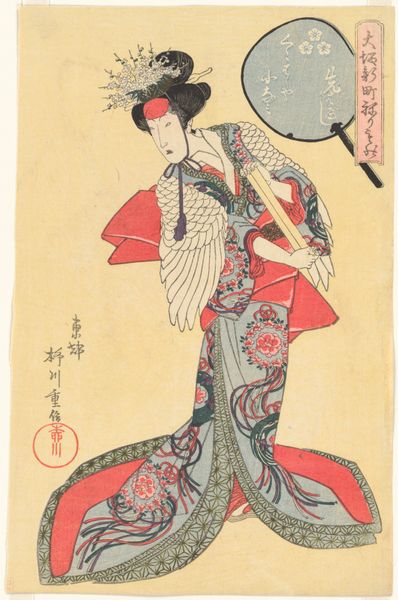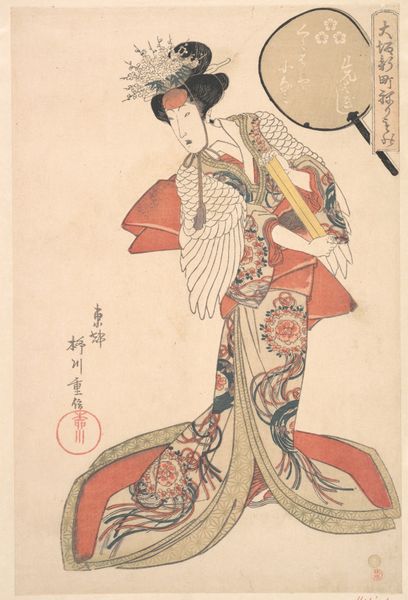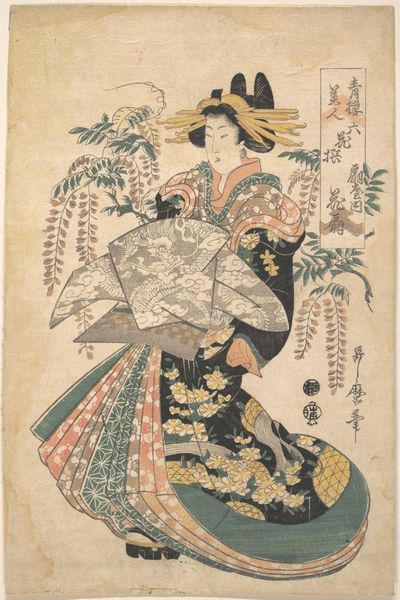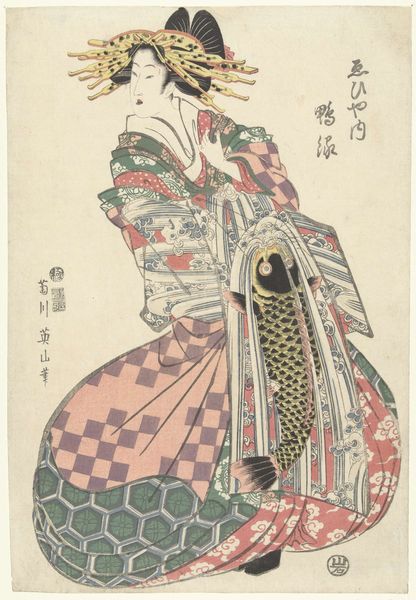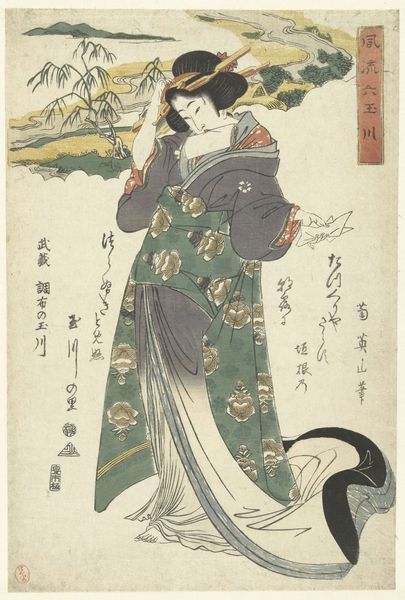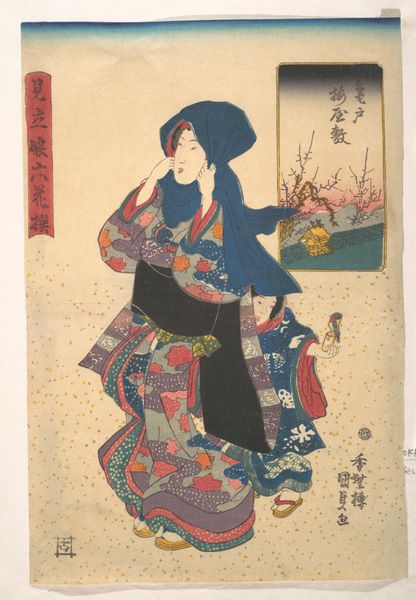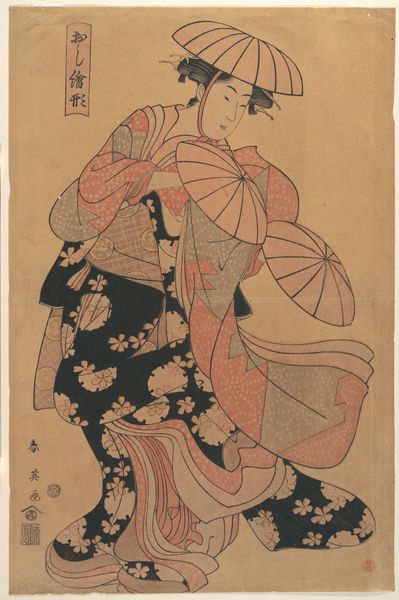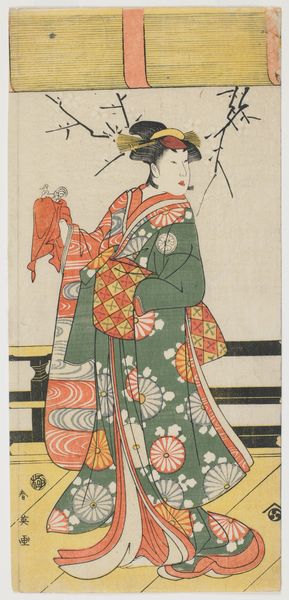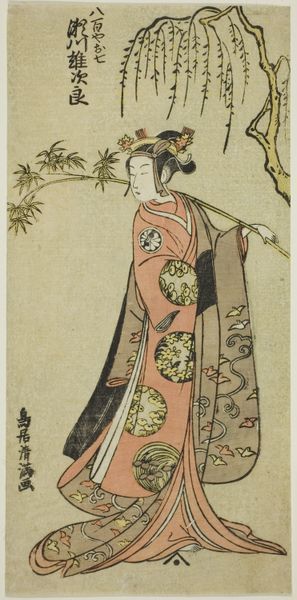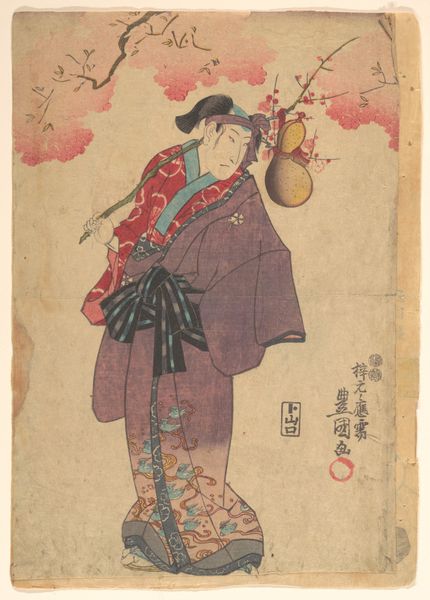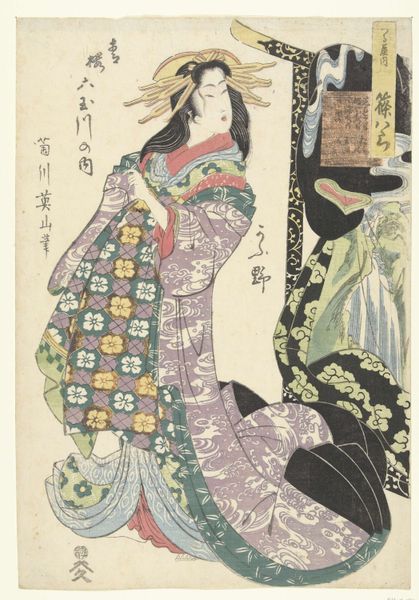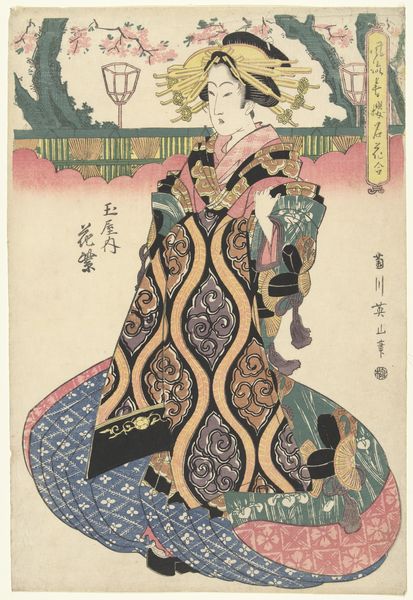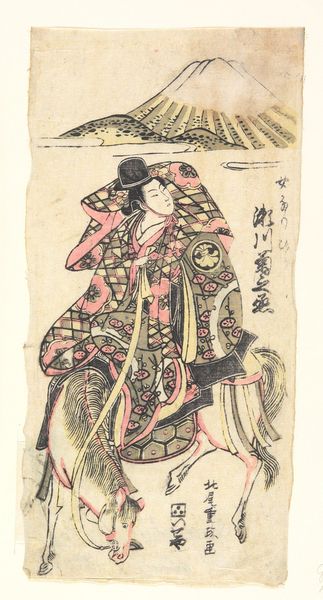
The Courtesan Hanatsuru of the Higashiōgiya Brothel as the Dragon Princess Otohime, from the series Costume Parade of the Shinmachi Quarter in Osaka (Ōsaka Shinmachi nerimono) 1822
0:00
0:00
print, woodblock-print
#
portrait
# print
#
asian-art
#
ukiyo-e
#
figuration
#
woodblock-print
#
orientalism
#
erotic-art
Dimensions: Image: 14 3/4 × 9 5/8 in. (37.5 × 24.4 cm)
Copyright: Public Domain
Editor: Here we have Yanagawa Shigenobu's woodblock print from 1822, "The Courtesan Hanatsuru of the Higashiôgiya Brothel as the Dragon Princess Otohime." The details in the courtesan’s elaborate robe and headdress are captivating, and the way she's presented feels both regal and theatrical. How do you see this piece within its historical context? Curator: It’s fascinating to consider how Shigenobu uses the figure of the courtesan to negotiate complex social hierarchies and cultural narratives in Osaka. The brothel was a critical public institution, a venue for commerce, social exchange, and cultural display. Editor: So, you're saying it's more than just an image of a woman? Curator: Precisely. This print blurs the line between reality and fantasy, representing Hanatsuru as Otohime, a dragon princess, and elevating her status within the symbolic order. The *ukiyo-e* genre itself served as a form of advertising, promoting not only the courtesans but also the cultural cachet of the brothel. What do you notice about the patrons that purchased these works? Editor: I imagine wealthy merchants and members of the samurai class who frequented these establishments? Curator: Exactly! And their patronage shaped the imagery. These prints were instrumental in constructing and circulating notions of beauty, status, and desire within Edo society. This specific work, moreover, was a *mitate*, what’s typically known as a parody of a classical subject – elevating an ordinary scene through allusions to aristocratic culture. In this case, transforming a courtesan into a mythic Dragon Princess. Editor: So it's political statement then? A sign of changing social norms? Curator: It can be seen as such. What I take from the composition is that it tells the world what matters to this artist and who he thinks matters too, during this period. I learned to question if there truly is only one story about beauty and status to be told during Edo society. Editor: I can appreciate the intricate layers of cultural commentary embedded within this seemingly simple portrait now.
Comments
No comments
Be the first to comment and join the conversation on the ultimate creative platform.
